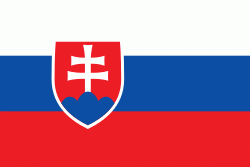Spišská Nová Ves (Spišská Nová Ves)
Spišská Nová Ves (Igló; (Zipser) Neu(en)dorf) is a town in the Košice Region of Slovakia. The town is located southeast of the High Tatras in the Spiš region, and lies on both banks of the Hornád River. It is the biggest town of the Spišská Nová Ves District.
Tourist attractions nearby include the medieval town of Levoča, Spiš Castle and the Slovak Paradise National Park. A biennial music festival, Divertimento musicale, is held here, attracting amateur music ensembles from all over Slovakia.
The town originated by merging an older Slavic settlement Iglov and a more recent settlement of German colonists (, Neudorf, Nová Ves - literally New Village).
Iglov is probably derived from a Slavic word igla (Proto-Slavic igъla, jьgъla, modern Slovak ihla) - a needle. Šimon Ondruš explains the name from Slavic jug - the south, a light, Juglava/Iglava/Iglov - a light place, a glade. The name was adopted by the Hungarians as Igló.
Tourist attractions nearby include the medieval town of Levoča, Spiš Castle and the Slovak Paradise National Park. A biennial music festival, Divertimento musicale, is held here, attracting amateur music ensembles from all over Slovakia.
The town originated by merging an older Slavic settlement Iglov and a more recent settlement of German colonists (, Neudorf, Nová Ves - literally New Village).
Iglov is probably derived from a Slavic word igla (Proto-Slavic igъla, jьgъla, modern Slovak ihla) - a needle. Šimon Ondruš explains the name from Slavic jug - the south, a light, Juglava/Iglava/Iglov - a light place, a glade. The name was adopted by the Hungarians as Igló.
Map - Spišská Nová Ves (Spišská Nová Ves)
Map
Country - Slovakia
 |
 |
| Flag of Slovakia | |
The Slavs arrived in the territory of present-day Slovakia in the fifth and sixth centuries. In the seventh century, they played a significant role in the creation of Samo's Empire. In the ninth century, they established the Principality of Nitra, which was later conquered by the Principality of Moravia to establish Great Moravia. In the 10th century, after the dissolution of Great Moravia, the territory was integrated into the Principality of Hungary, which then became the Kingdom of Hungary in 1000. In 1241 and 1242, after the Mongol invasion of Europe, much of the territory was destroyed. The area was recovered largely thanks to Béla IV of Hungary, who also settled Germans, leading them to become an important ethnic group in the area, especially in what are today parts of central and eastern Slovakia.
Currency / Language
| ISO | Currency | Symbol | Significant figures |
|---|---|---|---|
| EUR | Euro | € | 2 |
| ISO | Language |
|---|---|
| HU | Hungarian language |
| SK | Slovak language |















